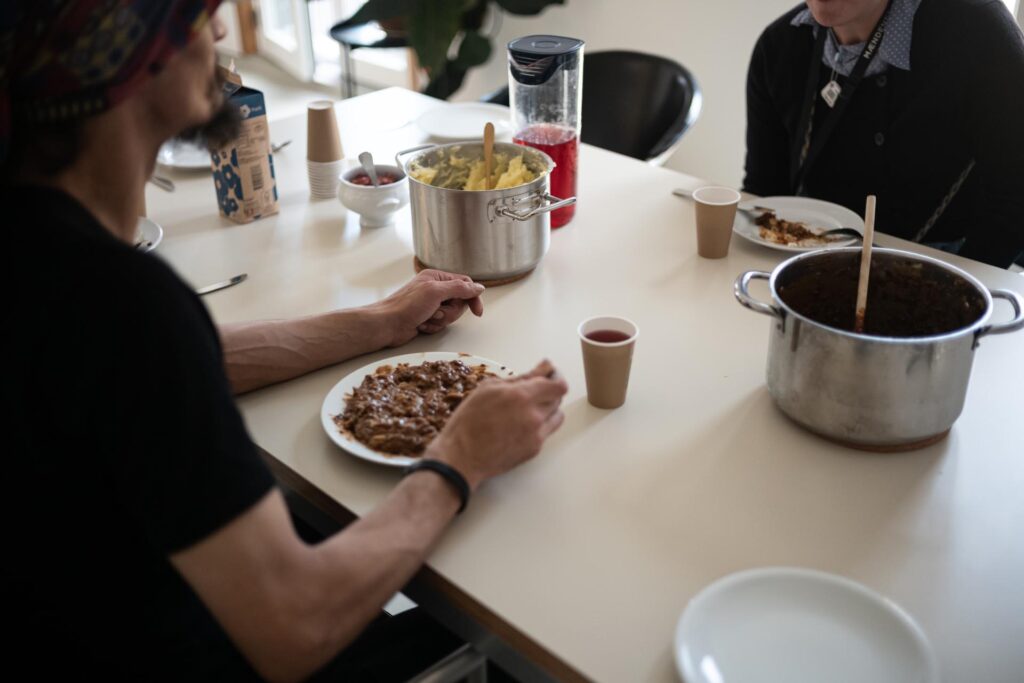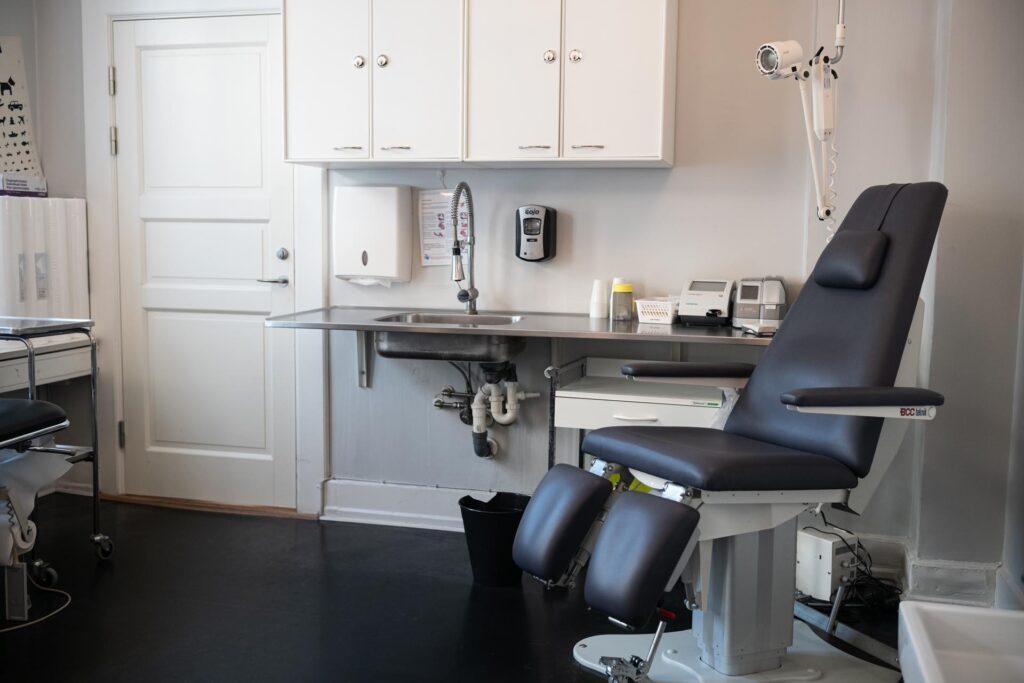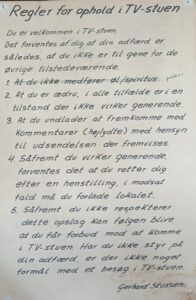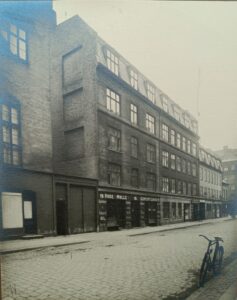HISTORY
Mændenes Hjem provides security, support and new hope to those who have the least.
Mændenes Hjem is divided into three foundations, each with its own focus area, but all with the same purpose.
History
For more than 100 years, Mændenes Hjem has been a central player in Vesterbro, Copenhagen. The organization’s history is a story of outcasts, the development of the welfare state, and humane persistence.
Mændenes Hjem started as a charitable desire to help vulnerable men. Today, we operate nine different departments and several cross-cutting projects for both men and women.
Our users come from all of the 98 municipalities in Denmark, and we work closely with municipal initiatives and authorities. Regional psychiatry, substitution treatment and hospitals, as well as with police units and other civil society organisations.
Mændenes Hjem’s offerings are constantly evolving and expanding.

Mændenes Hjem blev etableret i 1910. Allerede dengang tilbød man mad, tag over hovedet og omsorg til mænd, der faldt uden for samfundets rammer.

In 1960, the signature building on the corner of Lille Istedgade and Istedgade was inaugurated. Since then, many more services have been added, including the clothing project, which distributes clothing to people on the streets.

Mændenes Hjem has continuously adapted its activities to the needs of its users. Since the turn of the millennium, a nursing clinic in Lille Istedgade and a low-threshold health clinic have been opened, among other things.
115 years of history
1910 – Mændenes Hjem opens as a Shelter
1960 – Mændenes Hjem moves to Lille Istedgade
1970 – the Emergence of the Drug Scene in Vesterbro
In the 1970s, the drug environment really began to take shape in inner Vesterbro in Copenhagen. After the youth rebellion in the late 1960s and with the experiments that many carried out with both soft and hard drugs, a relatively large group of drug addicts emerged. This development quickly became visible in the district. Drug use spread to several central areas. In addition to Istedgade, Maria Kirkeplads, Copenhagen Central Station, Colbjørnsensgade and even Enghave Plads became important meeting places where drug users met and stayed. In particular, the intersection at Istedgade and Colbjørnsensgade became known as “Det skarpe hjørne” (The Sharp Corner), a central point for the open drug environment.
The cheap housing stock in the area and the practical logistical location in relation to the Central Station were contributing factors to inner Vesterbro becoming the primary meeting place for Copenhagen’s drug users. At the same time, treatment options were limited. Social work around the drug environment was beginning. One of the first major social efforts was Mariatjenesten, which was established in 1974 under Mariakirken on Istedgade. Mariatjenesten, which was an initiative from Kirkens Korshær (The Church’s Army), functioned as a community center and a permanent support function for this new group that had begun to frequent the area.
1980'erne – Scandinavian's largest open drug screne
Throughout the 1980s (and 1990s), Vesterbro continued to be the primary gathering place for Copenhagen’s drug users. During this period, Vesterbro became known as Scandinavia’s largest open drug scene. The area was characterized by visible drug sales and blatant drug use on the street, overdoses and a widespread occurrence of diseases such as HIV and hepatitis C. The dominant social and political approach was based on prohibition, punishment and social control. In many cases, this had the opposite effect and further marginalized drug users.
The overall strategy and discourse around drug use was almost exclusively aimed at getting drug users into treatment and out of their addiction. At the same time, inner Vesterbro was a run-down residential area that did not attract many new residents. Most apartments were poorly maintained with shared toilets in the back stairs, and heating often took place with petroleum or electric heating panels. The low rent meant that many drug users settled in the area.
During this period, the police launched a years-long campaign that introduced prohibition and residence zones in Vesterbro. The purpose was to limit open drug sales and break what is called drug layers in police parlance. When drug users stayed in these zones, they were met with fines, and the campaign quickly became nicknamed “stresskampagnen” (the stress campaign). But the campaign often had the opposite of the desired effect: Drug users were pressured to move to new and more unsafe places in the area, which increased their vulnerability, and the environment was also spread to more parts of the district.
1990’Erne – Better conditions for drug users and urban renewal
While the drug environment spread beyond Vesterbro, organizations such as Mændenes Hjem (founded 1910), Reden (established 1991) and Gadejuristen (established 1999) began to work purposefully to improve the conditions for drug users. From the mid-1990s, Mændenes Hjem began to take in residents who were active drug users. This was a marked break with previous practice, where the residents were primarily homeless with alcohol problems.
In the 1990s, the district also underwent an extensive urban renewal. Many properties in inner Vesterbro were renovated, which resulted in rising rents and the beginning of a gentrification process that changed the area’s social composition.
2000’Erne – Significant growth and a new approach to drug addiction
Mændenes Hjem has continuously adapted its activities to the needs of the users. This reflects both the development of the welfare state, changes in extreme vulnerability and society’s prioritization and organization of efforts. Since 1910 – and especially since 2000 – Mændenes Hjem’s activities have developed significantly, and new targeted offers have been created.
Since the turn of the millennium, Mændenes Hjem has, among other things, opened a nursing clinic in Lille Istedgade, a 24-hour drop-in center (Kontaktstedet), food distribution (Café Dugnad) and a low-threshold health clinic (Sundhedsrummet).
At the turn of the millennium, it became clear that the previous approach to drug addiction was not sufficient. Inspired by international experience, professionals and civil society actors began to promote harm reduction as an effective method of managing drug addiction. The ideas about harm reduction should not take over the users’ opportunity to receive treatment, but should be seen as a supplement. Harm reduction and treatment should be able to go hand in hand.
This new approach focused on reducing the negative consequences of drug use without necessarily requiring drug abstinence. In 2004, the Municipality of Copenhagen introduced its first 24-hour syringe and needle distribution scheme in collaboration with, among others, Mændenes Hjem. Later, several naloxone initiatives (antidote to opioids) were also launched, both in municipal and NGO settings.
In the early 2000s, it was realized that many drug users also suffered from mental disorders that required outreach treatment. In 2003, a cooperation agreement was concluded between the Municipality of Copenhagen and the Capital Region of Denmark on the establishment of outreach psychiatric teams. From around 2005, the effort was implemented in Vesterbro, where an outreach psychiatric team began to work closely with other actors in the area to offer treatment to people with severe mental disorders.
2009 – New street-based initiatives and a more care-oriented Police Force
As the harm reduction philosophy gained ground, the local police’s role also changed significantly. In 2009, the local police’s special outreach unit “Den Blå Bus” (The Blue Bus) was established, where law enforcement and care go hand in hand. Den Blå Bus functions as the local police’s face to the outside world in Vesterbro. Its purpose is both to be police for the residents of the area and at the same time show understanding and care for the socially vulnerable who walks around the district.
At the same time, the Municipality of Copenhagen began to implement street-level employees and established the Homeless Unit in 2009. The Homeless Unit’s primary focus is to support citizens without a permanent residence, including citizens with substance abuse problems. The Homeless Unit is active in the vulnerable substance abuse environment in Vesterbro and collaborates with other units and organizations to support citizens towards a more stable existence. A few years after the start-up, outreach substance abuse treatment and treatment for citizens with drug and alcohol problems were also established. Efforts that are distinguished by taking place on the street.
Heroin-assisted treatment (HAB) was introduced in Denmark in the early 2000s as an experiment, and in 2009 a nationwide program started. This offer is aimed at people with severe opioid addiction who have not had success with traditional substitution treatment. Although this was an advance, there was still a lack of legal drug consumption rooms where users could take drugs under safe and controlled conditions.
2010 – Natcafé opens exclusively for women
In 2010, Café Klare opened, which is a night café for particularly vulnerable women who cannot stay in ordinary crisis centers.
2011 – the debate about drug consumption rooms intensifies
While inner Vesterbro formed the framework for the drug environment, local citizens and resident groups engaged in the work to find solutions. Already in the early 00s, residents of Vesterbro put forward proposals for drug consumption rooms. It was a way to reduce the nuisance caused by public injections, waste and insecurity. Throughout the 00s, the City of Copenhagen proposed that Copenhagen should be a pilot municipality for drug consumption rooms. However, this required a change in the legislation in the Folketing, for which there was no political support at the time.
In 2011, a group of professionals, local residents and activists established Fixelancen – a converted ambulance where drug users could take drugs under the supervision of healthcare professionals. The project practiced civil disobedience, as it was essentially illegal. But it helped to create awareness of the need for drug consumption rooms. Fixelancen received a lot of attention, a lot of media coverage and helped to pressure politicians into action.
The debate about drug consumption rooms became a small part of the election campaign leading up to the 2011 parliamentary elections, where the parties were divided. The Liberal Party, the Conservative People’s Party and the Danish People’s Party were against, while the Social Democrats, the Socialist People’s Party, the Red-Green Alliance and the Social Liberal Party supported the initiative. After the election, a government was formed and a Parliament was assembled, which created a majority for the legislative amendment.
2012 – Denmark's first temporary drug consumption room opens
In June 2012, the Danish Parliament passed a legislative amendment that made it possible for municipalities to establish drug consumption rooms. The purpose was to reduce overdose deaths, the spread of infection and insecurity in the cityscape. In 2016, the Copenhagen Police stated that the rooms were also a help for the police, which may have contributed to the Conservative People’s Party and the Liberal Party changing their position from opposition to support.
On October 2, 2012, the Municipality of Copenhagen, in collaboration with Mændenes Hjem, opened Denmark’s first temporary drug consumption room in Sundhedsrummet in Kødbyen on Vesterbro. The offer, which was only for injection use, was staffed with social and health professionals. It created greater security and reduced the risk of overdoses. The opening marked a break with previous prohibition policies and requirements for drug abstinence for access to help. At the same time, it became the starting point for the harm reduction approach, which has since been developed and still forms the basis for the work today.
2013 – Skyen opens as a permanent drug consumption room
In August 2013, the temporary room was supplemented by the first permanent drug consumption room, Skyen (The Cloud), which opened in connection with Mændenes Hjem on Istedgade. Skyen offered both injection and smoking rooms and was staffed with both health and social professionals. This offer gave drug users the opportunity to choose the method of consumption that suited them best and created a safe and supportive environment. Drug users quickly embraced Skyen, and it led to a significant reduction in drug use on streets and roads. According to an estimate from the Technical and Environmental Administration in the Municipality of Copenhagen, hazardous waste such as used syringes and needles was reduced by between 80 and 90 percent. In August 2023, Skyen opened in Mændenes Hjem’s premises in Lille Istedgade. Skyen was Denmark’s first permanent drug consumption room and was operated in collaboration with the Municipality of Copenhagen.
2016 – H17 opens as the Nordic Region's largest drug consumption room
In 2016, the Municipality of Copenhagen opened H17, the largest drug consumption room in the Nordic countries, located on Halmtorvet in the brown Kødby (Meatpacking District). Here, drug users can consume their brought drugs under health professional supervision and receive advice.
2019 – Mændenes Hjem takes over H17 and starts a job initiative for vulnerable people
In 2019, Mændenes Hjem takes over the operation of H17 from the Municipality of Copenhagen after a business transfer. Today, H17 is the world’s largest drug consumption room. H17 constitutes a safe environment for drug users and is a central part of the city’s harm reduction effort.
Another significant initiative that was introduced in 2019 was the pilot scheme Socialt Frikort (Social Exemption Card). The purpose was to give socially vulnerable citizens the opportunity to earn up to DKK 20,000 annually tax-free, without the income being deducted from their public support benefits. The scheme became permanent in 2025, and the amount you can earn as a “frijobber” (exempted jobber) without deduction has now been raised to DKK 40,000 per year.
2020 – Comprehensive renovation begins
In 2020, a thorough, foundation-funded renovation and expansion of the building in Lille Istedgade 2 begins. The purpose of the conversion has been to create a welcoming and homely 24-hour offer for the house’s residents and the 500-700 people who use the house daily. With the conversion, Mændenes Hjem has been raised by two floors, received modern housing, a courtyard and flexible and spacious common areas. There was room for both peace and activity for the house’s residents. The conversion has also focused on creating a safe and secure workplace for the employees, as well as contributing to Mændenes Hjem being experienced as a good and considerate neighbor.
The extensive renovation lasted almost two years, and in 2022 Mændenes Hjem was able to reopen its doors on Lille Istedgade for some of Denmark’s most vulnerable citizens.
At the same time, in the period from 2020 to 2022, Mændenes Hjem was divided into two foundations, Ejendomsfonden Mændenes Hjem (Property Foundation Mændenes Hjem) and Driftsfonden Mændenes Hjem (Operating Foundation Mændenes Hjem).





